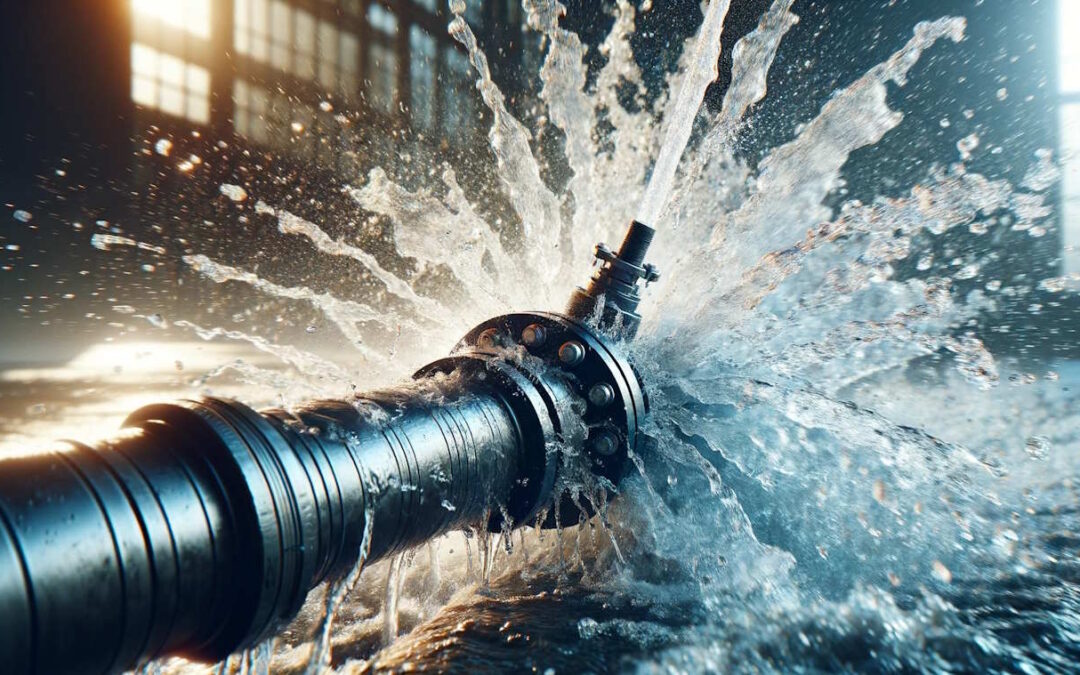Innovative Solutions for Very Early Detection of Water Leakages in Buildings and Facilities
As the stability of structures and facilities is extremely important, the difficulty of early detection of water leakages has stimulated ingenious remedies that guarantee to change the method we guard against prospective problems. From innovative leak discovery modern technologies to the implementation of IoT sensing units for real-time surveillance, the landscape of leak avoidance is progressing rapidly. Device understanding algorithms use a glance into the future of leak forecast, while thermal imaging offers a non-intrusive method for identifying concealed leakages. Automated water circulation analysis systems are reshaping exactly how leakages are recognized and addressed, leading the way for an aggressive strategy to water leak detection. Each of these services holds the crucial to making certain the reliability and longevity of our built atmosphere, triggering a change in the direction of an extra lasting and reliable future.
Advanced Leak Detection Technologies
Advanced leak discovery modern technologies, outfitted with sophisticated sensing units and formulas, play a critical duty in promptly determining and identifying water leaks in various setups. These modern technologies utilize a combination of acoustic, thermal, and electromagnetic sensing approaches to identify leakages precisely. Acoustic sensors detect the audio of running away water, permitting accurate localization of the leak resource. Thermal imaging identifies temperature level changes brought on by water leak, supplying another reliable technique for leak recognition. Electro-magnetic sensors can recognize modifications in magnetic fields brought on by water, offering yet an additional layer of leak detection ability.

IoT Sensors for Real-Time Monitoring
In the realm of modern-day water leakage discovery, the integration of IoT sensors for real-time tracking stands for a crucial innovation in enhancing positive leak detection abilities. These sensing units supply continuous monitoring of water systems, supplying real-time information on water circulation prices, stress variants, and temperature level changes. By leveraging IoT innovation, these sensors can find also the tiniest anomalies in water usage patterns, enabling early identification of potential leakages before they escalate right into significant concerns.
IoT sensing units send data to a centralized platform, where innovative formulas analyze the information and generate signals or alerts when irregularities are discovered. This real-time monitoring capacity allows building proprietors or facility supervisors to without delay deal with leakages, lessening water damages, reducing fixing expenses, and saving next water resources.
Furthermore, IoT sensors can be incorporated with building management systems, enabling automated feedbacks to discovered leaks, such as turning off water valves or activating pumps to mitigate the influence of leakages. Overall, the implementation of IoT sensors for real-time monitoring considerably boosts the efficiency and effectiveness of water leakage detection in buildings and framework.
Equipment Discovering Algorithms for Leakage Prediction

One trick advantage of using artificial intelligence for leakage prediction is its capacity to continuously discover and enhance its accuracy over time. As even more information is collected and fed right into the algorithm, it can refine its forecasts and adapt to altering problems, ultimately raising the dependability of leakage discovery systems.
Moreover, equipment discovering algorithms can assist in identifying refined signs of leakages that may go undetected by click for source traditional surveillance techniques. water leak detection. By assessing complicated information sets in real-time, these formulas can offer very early warnings and informs, allowing for timely treatment and precautionary upkeep to reduce possible water check that damages and connected prices
Utilizing Thermal Imaging for Leakage Discovery
Thermal imaging innovation supplies a promising technique for spotting water leakages in numerous systems and infrastructures. By using infrared radiation and temperature level variances, thermal imaging video cameras can recognize hidden leaks that are not quickly noticeable to the nude eye. When water escapes from pipes or structures, it commonly changes the temperature of the surrounding location, developing temperature level differentials that thermal cameras can catch. These temperature abnormalities are after that translated into visible pictures, highlighting the precise place of the leakage.
One of the essential benefits of thermal imaging for leak detection is its non-intrusive nature. Generally, the use of thermal imaging innovation boosts the effectiveness and precision of water leak discovery, making it a useful tool for keeping the integrity of structures and infrastructures.
Automated Water Circulation Analysis Equipments
Exactly how can computerized water flow evaluation systems transform the discovery and management of leakages in various systems and frameworks? Automated water flow evaluation systems offer an aggressive method to leakage detection by constantly keeping track of water circulation rates and patterns. By establishing standard data, these systems can swiftly identify variances that might suggest a leakage, enabling punctual intervention to stop extensive damage.
These systems make use of advanced algorithms to assess real-time data and give immediate notifies when abnormalities are spotted, enabling for speedy action to be taken. Furthermore, computerized water circulation analysis systems can be integrated with building monitoring systems or IoT systems, enhancing general performance and enabling remote tracking capacities.
Additionally, the information accumulated by these systems can be made use of for anticipating upkeep functions, assisting to determine prospective weak factors in the facilities prior to leakages happen. Generally, the execution of computerized water circulation analysis systems can considerably improve leak discovery and monitoring techniques, eventually resulting in cost savings, reduced water wastefulness, and raised sustainability in structures and infrastructure.

Final Thought
In verdict, the integration of advanced leakage detection technologies, IoT sensors, artificial intelligence formulas, thermal imaging, and computerized water flow analysis systems uses cutting-edge services for very early detection of water leakages in structures and infrastructure. These innovations make it possible for real-time surveillance, forecast of leakages, and effective detection techniques to avoid water damage and wastage. Implementing these solutions can help in keeping the honesty and sustainability of water supply in different settings.